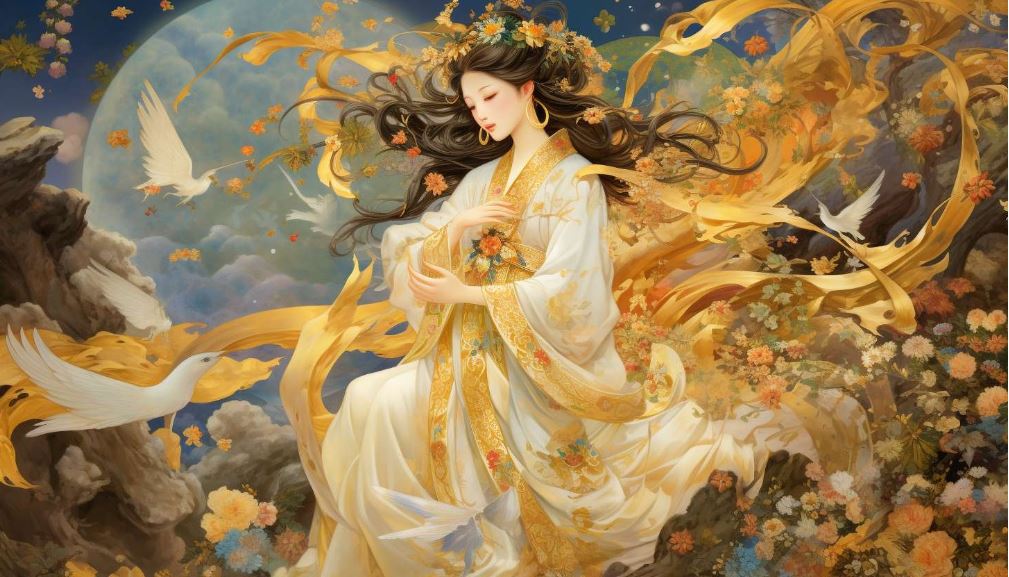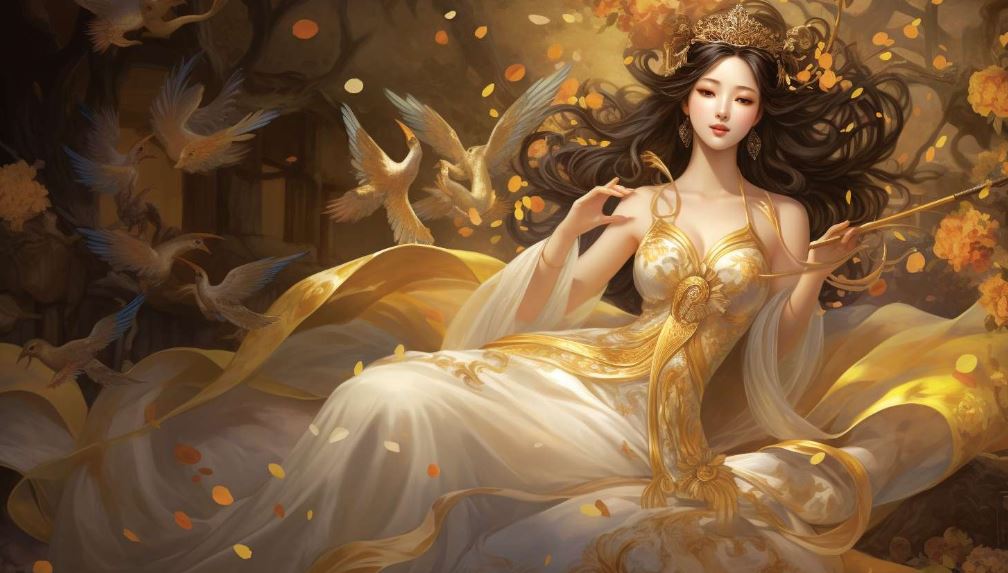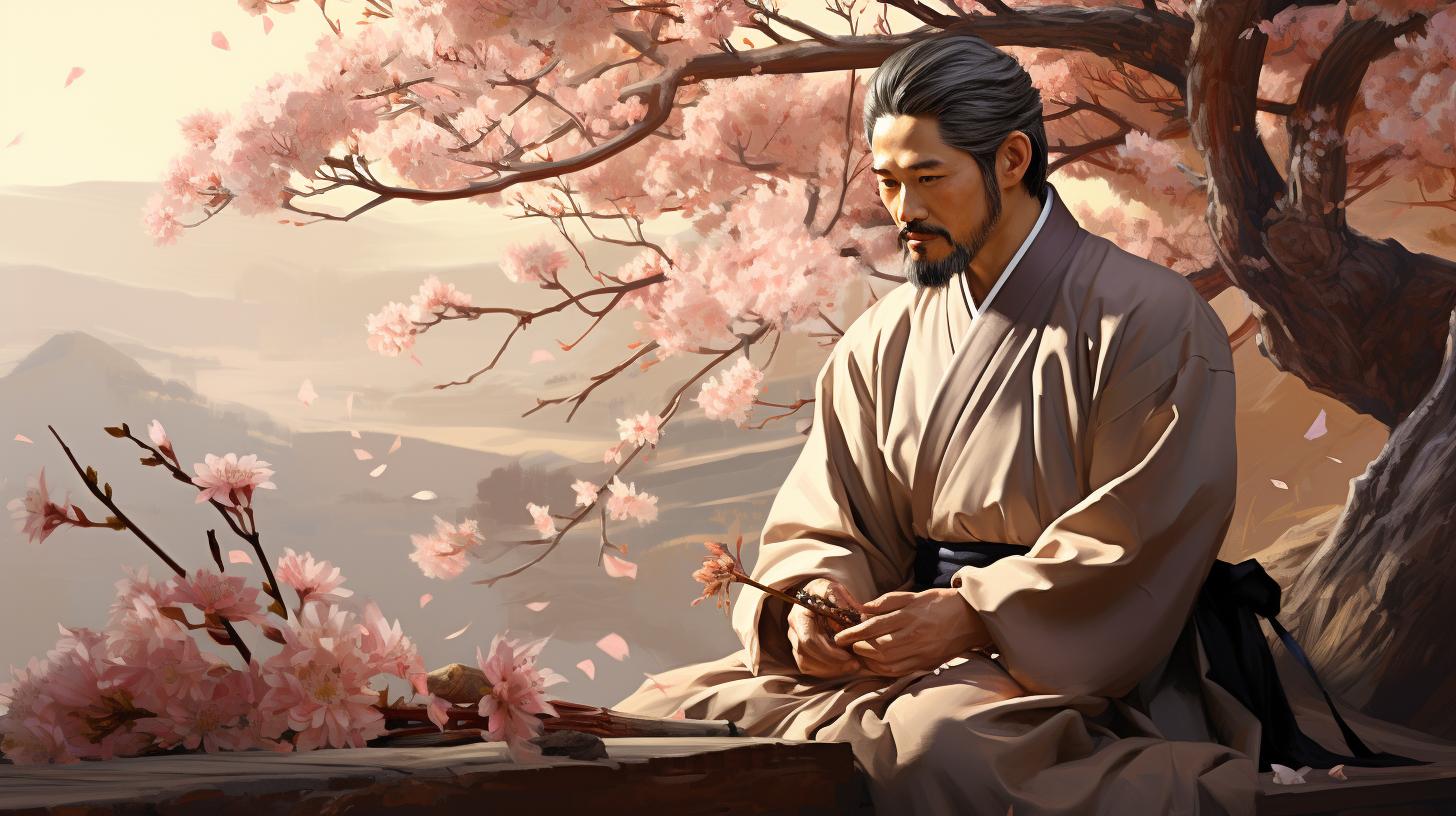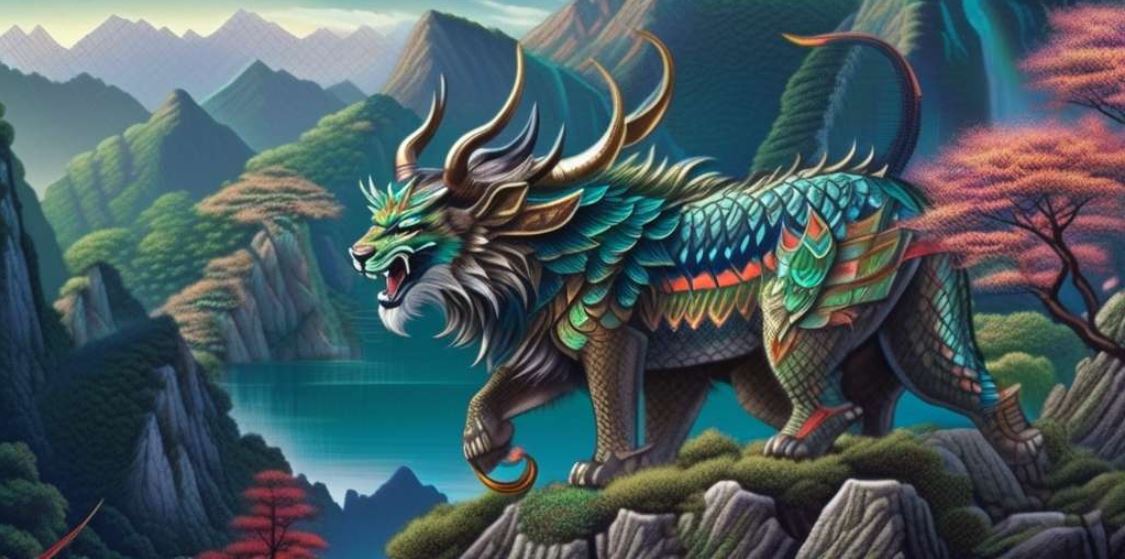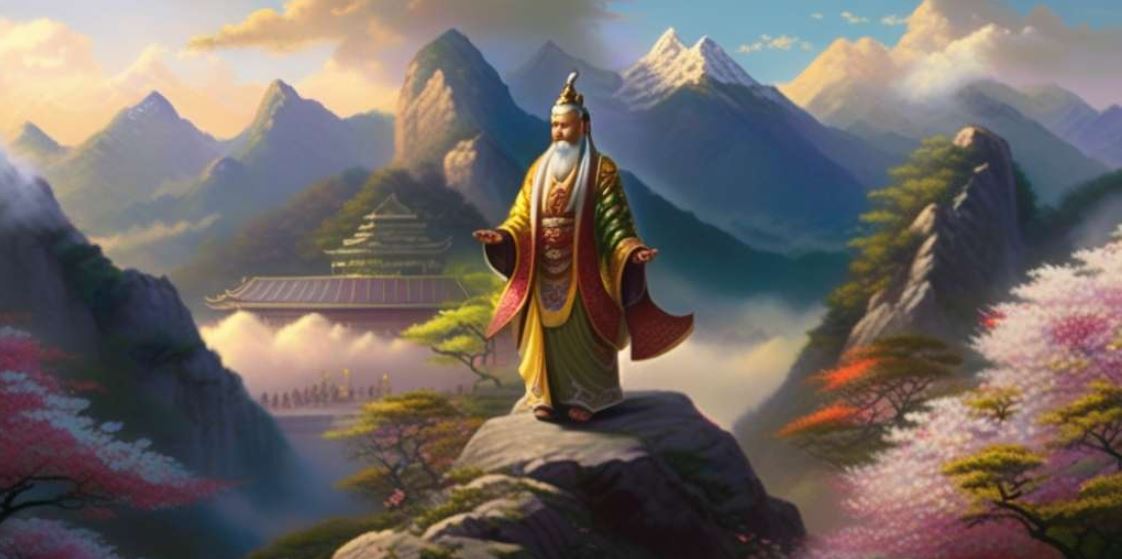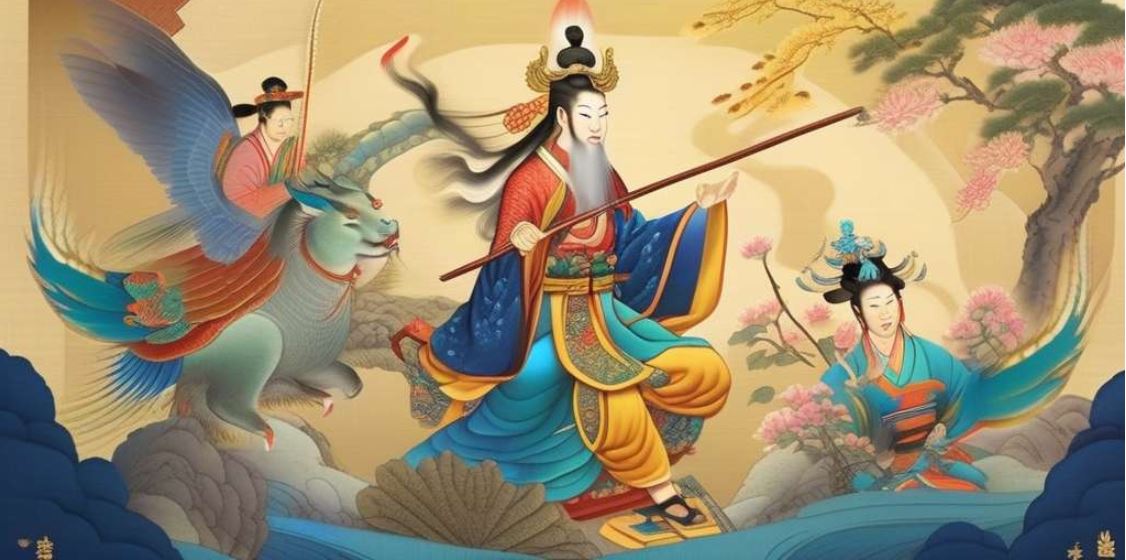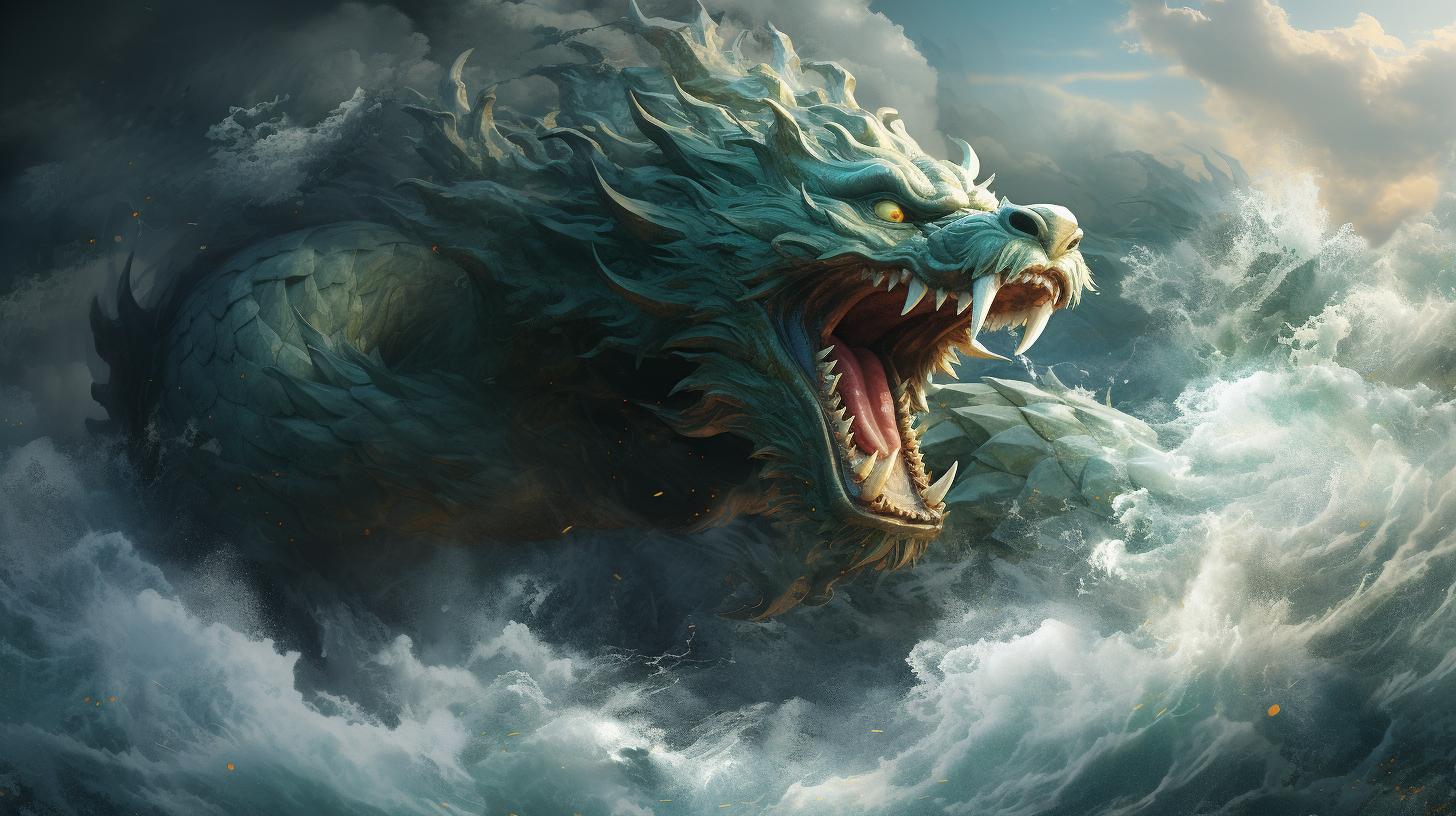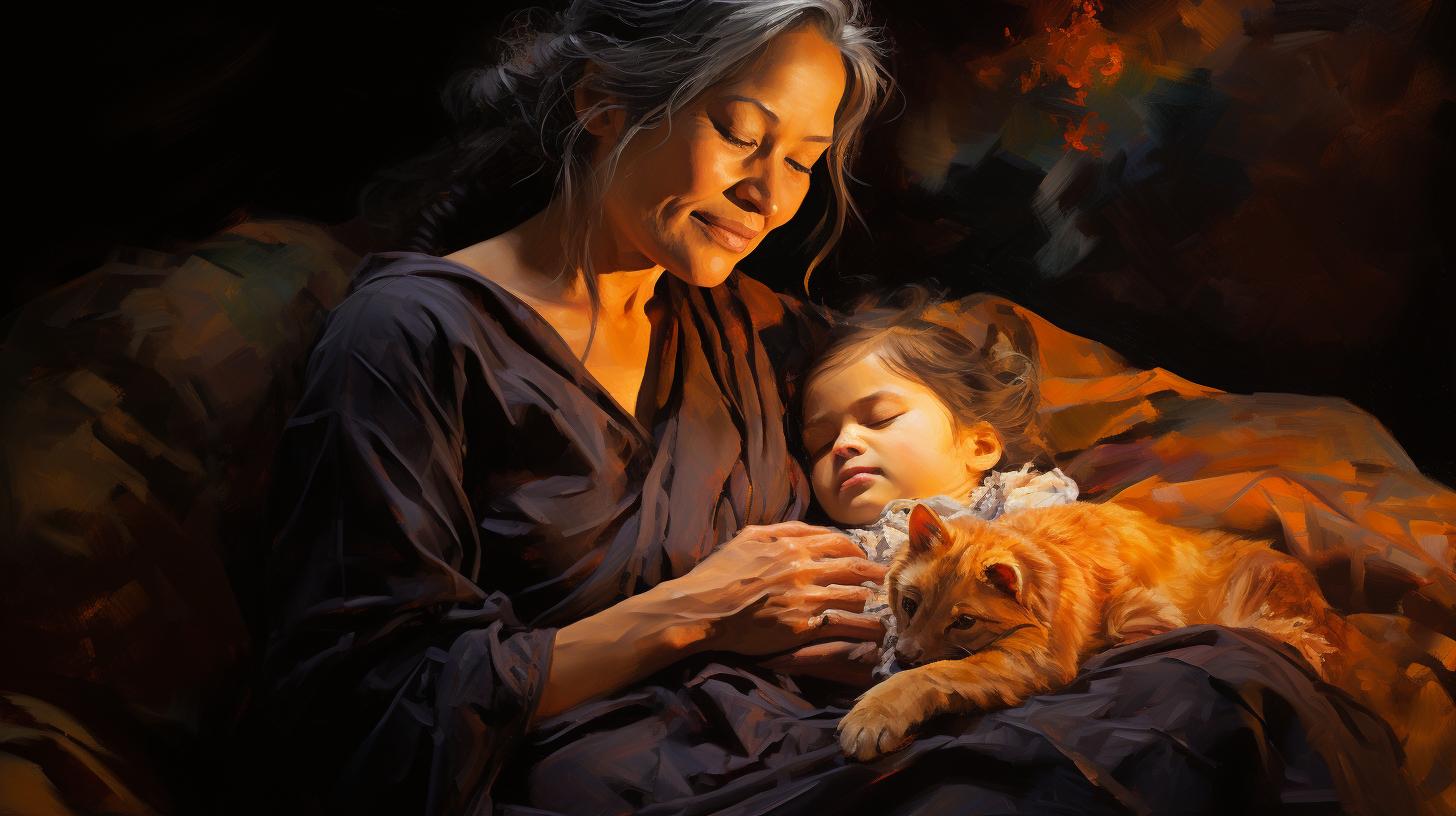Korean Goddess of the Moon: Mythology and Celebration in Korean Culture
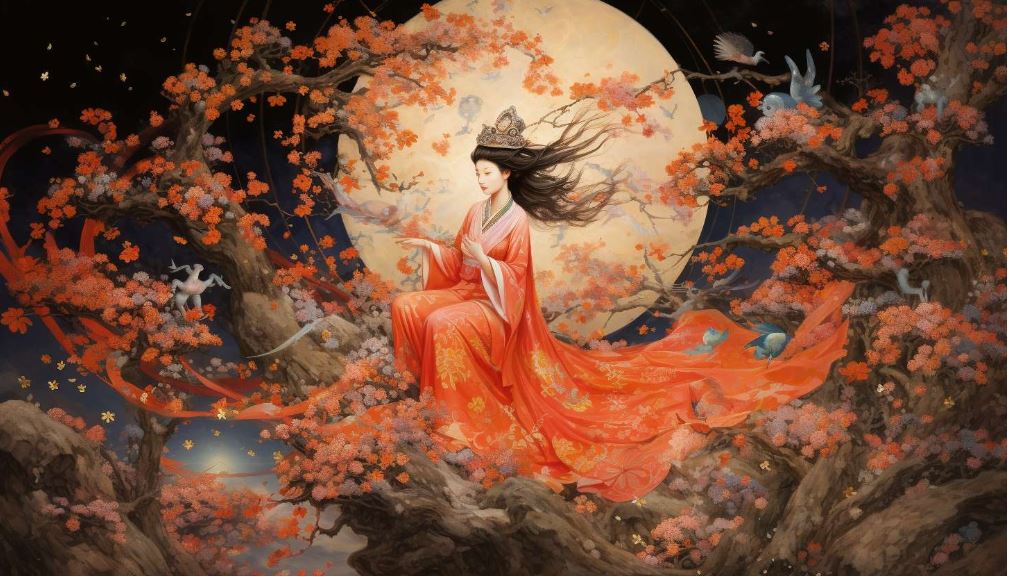
Korean goddess of the moon, Chang’e, is a prominent figure in Korean mythology. Legend tells of her transformation from a mortal woman to an immortal goddess after consuming an elixir of immortality.
Chang’e is associated with the Mid-Autumn Festival, a celebration that involves moon gazing and enjoying mooncakes. Other notable deities in Korean mythology include Dalnim, another lunar goddess, Hwanung, a god who descended to bring peace, and Haemosu, the sun god associated with the founding of kingdoms.
The diverse representations of the Korean goddess of the moon in art and the ongoing significance of these myths in Korean culture are explored in this article.
Korean Goddess of the Moon: Chang’e
Chang’e, the Korean goddess of the moon, holds a significant place in Korean mythology. According to legend, she was a mortal woman who attained immortality after consuming the elixir of immortality.
This mythological transformation elevated Chang’e to the status of a goddess, revered for her beauty and grace.
Legend of Chang’e and her transformation into a goddess
The captivating tale of Chang’e revolves around her desire for immortality. In search of eternal life, she consumed the magical elixir and ascended to the heavens, becoming the divine lunar goddess.
This legend emphasizes the idea of transcendence and the allure of immortality in Korean folklore.
Associations with the Mid-Autumn Festival and moon worship
Chang’e’s connection to the Mid-Autumn Festival is deeply ingrained in Korean culture. During this annual celebration, people gather to appreciate the enchanting moon and indulge in mooncakes. Chang’e is honored during these festivities as the goddess of the moon, symbolizing beauty, harmony, and the eternal cycle of nature.
Iconography and representations of Chang’e
The overall portrayal evokes a sense of awe and wonder, capturing the essence of Chang’e as the luminous goddess of the moon.
In conclusion, Chang’e, the Korean goddess of the moon, embodies the allure of immortality and represents beauty and grace in Korean mythology. Her association with the Mid-Autumn Festival and the enchanting lunar imagery surrounding her further solidify her significance in Korean culture.
The various depictions of Chang’e in art showcase her ethereal presence, surrounded by fairies and exuding celestial elegance.
Dalnim: Another Lunar Goddess in Korean Mythology
Dalnim is a prominent figure in Korean mythology, revered as a powerful lunar goddess associated with the moon. Her mythological origin and role encompass captivating legends that have been passed down through generations.
Mythological origin and role of Dalnim
The origins of Dalnim‘s mythological story trace back to ancient times, where it is believed she ascended to the moon and acquired her divine status. According to the tales, Dalnim‘s connection to the moon granted her mystical powers and wisdom.
In Korean mythology, Dalnim is often portrayed as a compassionate goddess who watches over mortals during the night. She is attributed with the ability to bring calmness, serenity, and guidance to those who seek solace under the moon’s gentle glow.
Dalnim also embodies the essence of beauty and grace, captivating all with her ethereal presence. As the lunar goddess, she represents femininity and the nurturing aspects of nature, symbolizing the cyclic nature of life and the moon’s influence on earthly matters.
Worship and reverence for Dalnim in Korean culture
Throughout Korean culture, Dalnim is revered and worshipped for her benevolence and divine influence. Devotees pay homage to her by holding ceremonies and rituals dedicated to the moon and her divine presence.
As a symbol of femininity and the cyclic nature of life, Dalnim‘s presence and influence serve as a source of inspiration and spiritual connection for many.
Hwanung is a prominent deity in Korean mythology, known for his role as the god who descended to earth to govern mortals and bring peace. His origins and significance are deeply rooted in Korean folklore and traditions.
Origins and Significance of Hwanung
Hwanung‘s birth is attributed to Sang-je, the highest deity in Korean mythology. He was conceived with the intention of establishing a connection between heavenly and earthly realms. Hwanung‘s emergence symbolizes the divine intervention in human affairs and the introduction of spiritual guidance.
According to the myth, Hwanung descended upon the sacred Mount Taebaek, specifically in the legendary location known as ‘Heavenly Palace.’ This descent signified the establishment of a divine presence on earth, intertwining the celestial and mortal realms.
The significance of Hwanung‘s arrival lies in the belief that he brought wisdom, enlightenment, and the foundations of civilization to humanity. Through his guidance, he aimed to lead mortals towards harmonious living and a peaceful coexistence.
Relationship with Mortals and Contribution to Peace
Hwanung‘s interactions with mortals were instrumental in fostering an era of tranquility and prosperity. He imparted knowledge, taught moral virtues, and introduced various aspects of culture, including agriculture and societal systems.
Legend has it that Hwanung actively governed the land and mediated conflicts among mortals, ensuring fairness and justice prevailed. His efforts in establishing social order and promoting ethical values greatly contributed to the stability and well-being of ancient Korean society.
The legacy of Hwanung as a god who descended to rule continues to endure in Korean folklore, cultural practices, and spiritual beliefs. His impact on the development of Korean society remains integral, promoting virtues that have transcended generations and shaped the nation’s values.
Haemosu is a prominent deity in Korean mythology, known as the god of the sun. This section delves into the role of Haemosu in the founding of Buyeo and Goguryeo, two significant kingdoms in Korean history.
Haemosu‘s role in the founding of Buyeo and Goguryeo
This kingdom eventually grew into one of the Three Kingdoms of Korea, showcasing Haemosu‘s significant influence in shaping the region’s history.
Goguryeo, another prominent kingdom, also owes its origin to Haemosu. It is believed that Haemosu fathered Chumo, who later became the founder of Goguryeo. This lineage underscores the divine lineage that Haemosu possessed, solidifying his role in the establishment of yet another influential Korean kingdom.
Depictions and symbols associated with Haemosu
Haemosu is often depicted wearing a crown adorned with feathers from a crow, accentuating his divine stature. He is represented as a powerful and radiant figure, exemplifying the strength and warmth of the sun.
In many artistic renditions, Haemosu can be seen riding a dragon-drawn chariot, further symbolizing his association with celestial forces.
Haemosu‘s symbol, the sun, is a recurring motif in Korean culture, representing vitality, energy, and enlightenment. The imagery of the sun is frequently integrated into architectural designs, traditional attire, and various forms of artwork, reinforcing the enduring legacy of Haemosu in Korean society.
In conclusion, Haemosu holds a central position in Korean mythology as the god of the sun. His pivotal role in the establishment of Buyeo and Goguryeo highlights his immense influence in shaping the course of Korean history.
The representations and symbols associated with Haemosu further emphasize his divinity and enduring significance in Korean culture.
Comparison and Interactions between Korean Deities
Comparison and interactions among the gods and goddesses in Korean mythology provide fascinating insights into the intricate web of divine relationships. These connections shape the narrative and understanding of the pantheon’s dynamics.
Let’s explore some key aspects of the interplay between these mythological figures.
Connections and Relationships among the Gods and Goddesses
Korean mythology showcases a rich network of connections and relationships between its deities. The gods and goddesses often interact with one another, whether through blood ties, collaborations, or conflicts. For example, the lunar goddess Chang’e and the lunar goddess Dalnim share a celestial bond as fellow lunar deities.
This connection highlights the reverence for the moon as an important celestial body in Korean culture.
Additionally, the intricate family tree of Korean mythology showcases the parental relationship between Hwanung, the god who descended to rule, and Dangun, the respected god of mythology. Hwanung serves as both a benevolent ruler of mortals and a paternal figure to Dangun, reflecting the importance of familial bonds in Korean culture.
Influences of Korean Mythological Figures on Cultural Practices
The mythological figures in Korean culture exert a profound influence on various cultural practices. The stories and legends surrounding these deities shape customs, festivals, and artistic expressions. For instance, the Mid-Autumn Festival celebrated in Korea, which honors the lunar goddess Chang’e, reflects the veneration for the moon and its association with beauty and grace.
During this festival, people gather to appreciate the moon’s splendor, indulge in mooncakes, and engage in cultural activities steeped in tradition.
Moreover, the tales of Hwanung‘s descent and subsequent rule over mortals highlight the desire for peace and harmony in Korean society. The belief in his divine guidance underscores the values of good governance and societal welfare, which have strongly influenced Korean political and ethical systems throughout history.
- The interconnectedness of the deities in Korean mythology shapes a complex narrative.
- The celestial bond between Chang’e and Dalnim emphasizes the reverence for the moon in Korean culture.
- Hwanung‘s relationship with Dangun showcases the importance of familial bonds in Korean society.
- The Mid-Autumn Festival and cultural practices surrounding it exemplify the influence of mythological figures on Korean customs.
- Hwanung‘s stories contribute to the values of good governance and societal welfare in Korean society.
The comparison and interactions between Korean deities expose the depth of their mythology and their lasting impact on cultural practices.
These tales reflect the values, beliefs, and aspirations of the Korean people, weaving a rich tapestry of myth and tradition that continues to shape their identity in the present day.
Images and Representations of the Korean Goddess of the Moon
Exploring the captivating allure of the Korean goddess of the moon, various depictions of her have been created in different forms throughout history. These artistic representations not only convey her ethereal and divine presence but also highlight the cultural significance she holds in Korean mythology.
Fascinating depictions of the lunar goddess in various forms
Artists have carefully crafted mesmerizing images of the Korean goddess of the moon, capturing her beauty and grace in vibrant colors and intricate details. Paintings show her surrounded by celestial landscapes, enchanting hadas, and symbolic elements that add to the mystical aura that surrounds her.
These depictions often spotlight her regal demeanor, as she exudes an air of serenity and power.
Sculptures and statues depict her standing tall, adorned in majestic robes that flow gracefully around her. The sublime expression on her face reflects her wisdom and connection to the celestial realm.
Some representations showcase her holding a golden lyre, symbolizing her affiliation with music and the arts, while others depict her in a celestial chariot, traversing the night sky adorned with twinkling stars.
Traditional and contemporary artistic representations
Due to the enduring reverence for the Korean goddess of the moon, her image continues to inspire artists in various mediums. Traditional art forms, such as ink wash painting and traditional embroidery, still celebrate her divine presence.
These techniques reflect the rich cultural heritage of Korea and the meticulous craftsmanship involved in depicting her.
In recent times, contemporary artists have also explored new avenues to portray the Korean goddess of the moon. Digital art, illustrations, and modern sculptures use innovative techniques to capture her timeless allure, blending traditional symbolism with contemporary aesthetics.
These representations often convey a sense of wonder and evoke a connection to both the past and the present.
The everlasting influence of the lunar goddess
The images and representations of the Korean goddess of the moon serve as a testament to the enduring significance of her presence within Korean culture. They contribute to the preservation and propagation of mythology, allowing future generations to connect with their rich heritage.
These depictions not only capture the physical beauty of the goddess but also convey the intangible qualities that make her an enduring figure in the hearts and minds of the Korean people.
Significance and Continued Relevance
The Korean goddess of the moon, Chang’e, holds great significance in Korean mythology and culture. As a symbol of beauty and grace, Chang’e represents the eternal and captivating nature of the moon.
Through her legend and association with the Mid-Autumn Festival, Chang’e continues to be revered and celebrated in Korean society. This celestial deity embodies ideals of immortality and transformation, serving as a reminder of the power and allure of the moon itself.
The continued relevance of the Korean goddess of the moon lies in the deep-rooted cultural traditions and practices associated with her worship. The Mid-Autumn Festival, observed by admiring the moon and enjoying mooncakes, serves as a time for family gatherings and reflection.
The festival not only preserves the legend of Chang’e but also fosters a sense of unity and appreciation for the moon’s mystique among Korean communities, both within the country and abroad.
Appreciation of Mythology and Its Impact on Korean Identity
The mythology surrounding the Korean goddess of the moon is deeply intertwined with Korean identity, as it reflects the rich history, values, and beliefs of the Korean people. Through the tales of Chang’e and other deities, Koreans find a connection to their ancestral heritage and cultural roots.
The appreciation of mythology inspires pride and a sense of belonging, strengthening the collective consciousness of the Korean community. Furthermore, mythology shapes various aspects of Korean society, including art, literature, and entertainment.
The captivating stories of gods and goddesses serve as inspiration for countless novels, films, and artworks, showcasing the enduring impact of Korean mythology on contemporary culture. By exploring and appreciating the myths surrounding the Korean goddess of the moon, individuals can deepen their understanding of Korean heritage and contribute to the preservation and promotion of these traditions.
In conclusion, the Korean goddess of the moon holds significant importance and continues to be relevant in Korean culture. The legends of Chang’e and other deities not only provide a window into the past but also contribute to the formation of a strong Korean identity.
The ongoing appreciation of mythology and its impact on various aspects of Korean society ensures that these ancient stories remain integral to the cultural fabric of Korea in the year 2023 and beyond.
….

